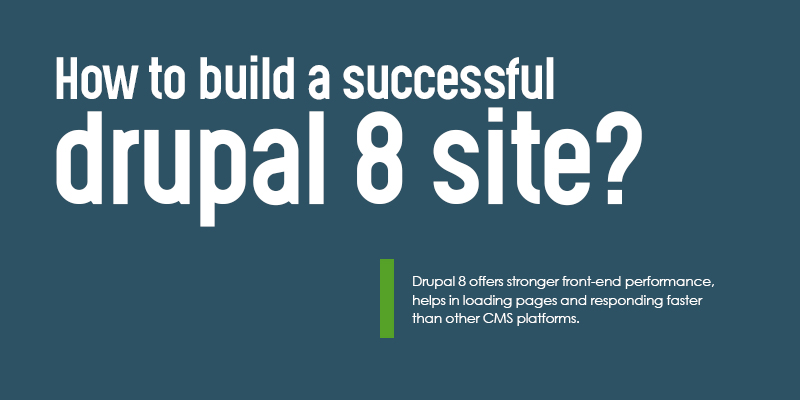How to build a successful Drupal 8 site?

Drupal is a special CMS for it is highly favoured by top companies and Government firms as well. Drupal can handle large traffic and provides easy content management features for people with little experience in using a CMS.
Drupal 8, the latest version offers lot of features including 1000+ plugins and 1500+ themes. Drupal 8 has several advantages such as Twig templates, RESTful API support, Views integration and easy-to-edit interface for content management. Drupal 8 offers stronger front-end performance, helps in loading pages and responding faster than other CMS platforms.
With so much going for Drupal 8, here’s how we can build a successful Drupal 8 site.
Requirements analysis
The first step in building the Drupal 8 site is to define the scope of the project that is inclusive of all functionality implementations and various possibilities the new site should create in user experience.
Environment setup
Determine which PHP version, MySQL and server configurations are needed to match with the basic requirements for building Drupal 8 site.
Defining the entities
The entities are used in a website to capture data values from end-user which will be used for rendering the content. So, defining the entities include particulars like content types, terms and required user fields.
Implementing plugins and addons
Drupal.org is a rich source for various plugins and addons. We download those readily-available extensions from Drupal.org while use the third-party extensions for the site.
Using custom extensions for features
For features and functionalities that are new and doesn’t have ready-made extensions, write your own codes. Ensure there is no security loopholes and maintain efficiency when it comes to site performance such as database queries, queue jobs management and batch operations.
Theming and designing the website
Check free, paid and also design new themes based on the requirements in order to ensure responsiveness. Use Twig template engine for theming as it helps fast rendering.
Integrating the cache mechanism
Use the cache mechanism to integrate the site performance. Cache API in Drupal 8 is much improved than earlier versions. Among external cache mechanisms, you can use redis cache and varnish cache.
Testing the site
Run load testing, functional testing and others to ensure that every feature and functionality works as expected. Use Apache JMeter and Selenium for testing the site extensively. You can also refer unit testing with simple test in Drupal.org, here.
Hosting the website
After thoroughly testing the site, host the website. Ensure latest version of all softwares such as MySQL, PHP, web server like Nginx, Apache 2.0 are used for proper functionality of the website. Automated backup can be used for periodic backup. Crontab can be used to schedule routine software jobs within the site.
